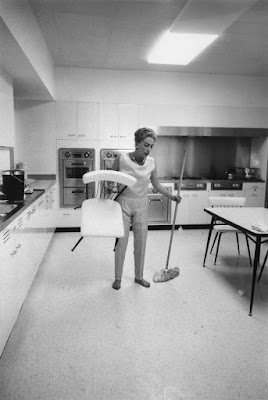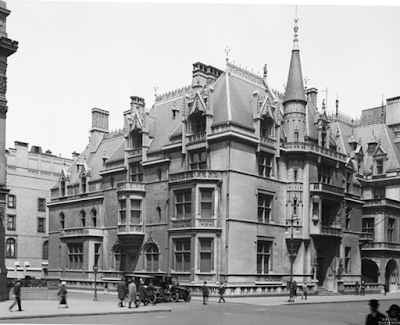Two of Stanley C. Weyman's Many Hats
 |
| Stanley Clifford Weyman (far right) with the Princess Fatima of Afghanistan and her three adult sons during a visit to Washington DC, circa 1921. |
In its May 7, 1951 issue, LIFE Magazine featured a brief article about the unmasking of a notorious imposter. At the top of the article was a picture displaying the many, many different hats found in the man's apartment: from tops hats, bowler hats and fedora , to a military cap, a panama and a boater. Suffice to say, both literally and metaphorically, Stanley Clifford Weyman wore many, many different hats in his lifetime.
 |
| LIFE Magazine article, May 7th 1951. |
 |
| The hats and shoes found in Weyman's apartment during the FBI's draft arrest, circa 1951. |
Stanley was born Stephen Jacob Weinberg on November 25th, 1890 in Brooklyn, New York, and while over the years he'd use several different names when posing as someone else, he eventually settled on Stanley Clifford Weyman, or some slight variation thereof. Young Stanley had aspirations to be a diplomat, lawyer and a doctor, and when his father, who couldn't afford schooling for one of those professions, let alone all three, told him to choose one, Stanley decided to go out and prove to him that he was adept at being multiple things without experience. Thus is the beginning of his career as an imposter.
Before I go any further, it's important to clarify that Stanley wasn't like most other imposters: he was never trying to get money from someone, or trying to obtain something from someone else. He didn't assume multiple identities out of malice or with bad intentions, but rather to keep himself from getting bored. It was never about trying to commit a crime, but rather to try a way of life, step into the shoes of a personality, that happened to interest him in that moment. In the same way that ordinary human beings try out different hobbies in an attempt to pass the time, Stanley would try out different identities, and once he'd used one, once he'd impersonated one way of life, then he'd be done with it and move onto his next venture.
 | |
|
Because he was so adept as posing as other people, the list of stories about him are endless. To save us from being here all day, I'll recount my two favorites. The first takes place in 1915, when Stanley decided to assume the identity of Lt. Commander Ethan Allen Weinberg, the consul general for Romania in New York. Claiming to be under the orders of Queen Marie of Romania, he one day called up the U.S. Navy and boarded the USS Wyoming, a battleship that was anchored on the Hudson River for repairs. Shown around by the captain, he would, periodically, pause to reprimand a sailor for a uniform infraction. Not once were his identity or credentials called into question by anyone on the ship.
Following the inspection, Weyman decided to celebrate by throwing a lavish dinner for the officers of the USS Wyoming at the Hotel Astor in New York City, the bill of which was to be footed by the Romanian Consulate in Washington, D.C. The evening went along smoothly until two FBI agents crashed the party, having recognized Weyman's name in the New York Times announcement about the affair and remembered him from his other previous impostures. He was arrested immediately, complaining that they should've waited till after dessert.
"All I can say," the captain of the USS Wyoming said afterwards to a reporter, "is the little guy put on one hell of a tour of inspection."
The next instance takes place six years later, and it perhaps the feat Stanley Clifford Weyman was best known for.
 |
| Stanley C. Weyman in the white uniform with the Princess Fatima of Afghanistan during her visit to Washington D.C. on July 5 1921. |
In 1921, the Princess Fatima of Afghanistan had arrived in America with two goals in mind: to meet President Warren G. Harding and to sell a 45-carat diamond she had brought with her so that she may send her sons to Eton and Oxford. The later goal went along smoothly: Princess Fatima settled into the Waldorf-Astoria Hotel in New York City and immediately began negotiating with city jewelers to sell the diamond. The former, however, not so much. At the request of Great Britain, who had yet to sign a permanent treaty with the newly independent Afghanistan, the State Department held off from establishing any sort of diplomatic relations with them, and as such Princess Fatima's desire to meet President Harding had largely been ignored.
Then Stanley stepped in. He'd read about Princess Fatima in the newspapers one morning, while having breakfast in his longtime Brooklyn residence, and, after having a quick shave and donning a naval uniform, had boarded a railway with the intention of meeting her. Visiting her at her hotel suite under the guise of the State Department Naval Liaison Officer, as nonexistent position, he apologized for the oversight, promised to arrange a meeting with President Harding, and used the ten thousand dollars she'd given him to book passage on Congressional Limited, the premiere expressway from New York to Washington, and a hotel suite at the Willard Hotel in D.C. After visiting the State Department and name-dropping several prominent senators and political figures, he managed to secure not only an appointment with Secretary of State Charles Evan Hughes, but, eventually, President Warren G. Harding himself. Acting as liaison now between the White House and the Princess, on July 5, 1921, he led Princess Fatima and her entourage to the White House, performed the introductions between the President and Fatima, and managed to worm his way into the group photographs taken on the White House lawn. It was only after the pictures were published by the press that someone recognized him, and his was sentenced to two years in jail for impersonating a naval officer.
One last thing I believe is worthy of mention: more-often-than-not, Weyman was arrested not for impersonating someone, but, rather, for not showing up for his parole meetings. Naturally, he found it difficult to set aside time to meet with his parole officer when he was busy hobnobbing with successful people under a different identity all around the country.
Sources:
A Treasury of Deception by Michael Farquhar.
The adventures of serial impostor Stanley Clifford Weyman.
LIFE Magazine, May 7th, 1951.
Library of Congress.
"The Big Little Man from Brooklyn," The New Yorker, November 16, 1968.



After a series of dead-end jobs, Stanley seemed to lose hope of ever making anything of himself, so he simply became someone else with better prospects - I admire his drive and purpose!
ReplyDelete